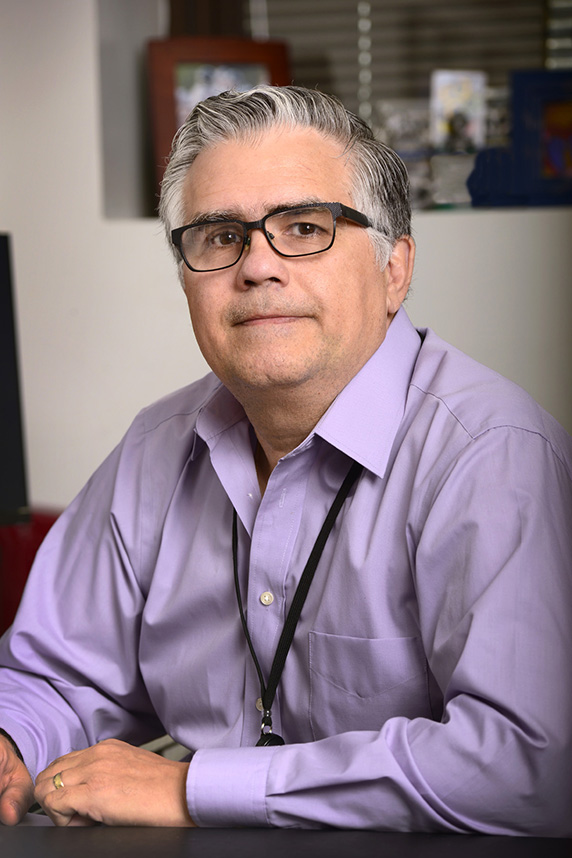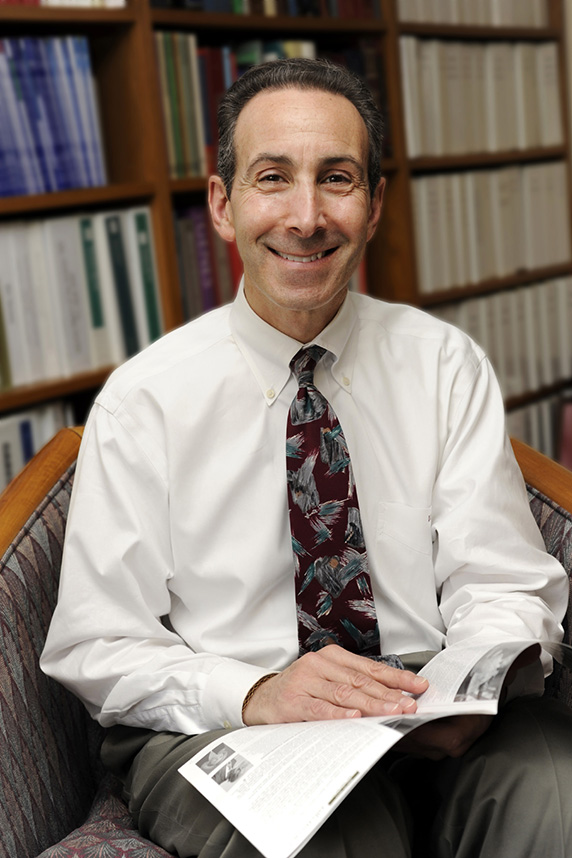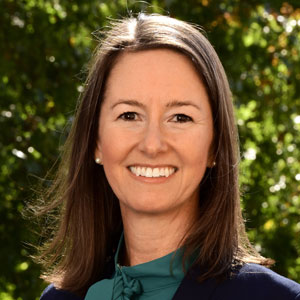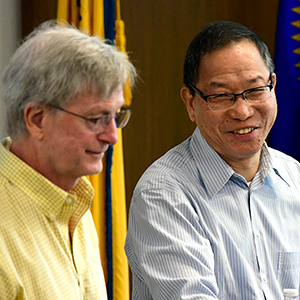When the American Association for the Advancement of Science announced its 2019 class of fellows Nov. 26, NIEHS reproductive endocrinologist Francisco DeMayo, Ph.D., was among the 443 scientists elected by their peers to the distinguished group. He leads the NIEHS Reproductive and Developmental Biology Laboratory (RDBL) and the Pregnancy and Female Reproduction Group within that lab.
 DeMayo said he was honored that his peers acknowledged his contributions to reproductive biology and his service to the scientific community. (Photo courtesy of Steve McCaw)
DeMayo said he was honored that his peers acknowledged his contributions to reproductive biology and his service to the scientific community. (Photo courtesy of Steve McCaw)DeMayo studies molecular mechanisms that regulate the female reproductive system and the lungs, as well as how environmental factors contribute to diseases like endometriosis, endometrial cancer, and lung cancer.
Critical expertise, outstanding environment
DeMayo joined the institute's research team in 2015. According to NIEHS Scientific Director Darryl Zeldin, M.D., he brought critical expertise, especially in pregnancy-associated diseases and dysfunctions. “He has expertise and interest in both the male and female systems, from both developmental and adult perspectives,” Zeldin said.
For his part, DeMayo cited the outstanding research atmosphere at NIEHS, noting collaboration with colleagues dedicated to studying the role of the environment in reproduction. Core facilities with state-of-the-art technologies are another important asset. “The Knock-out Mouse, Bioinformatics, Viral Vector, Pathology, and the Epigenomics and DNA Sequencing Cores have been integral to allowing my research to advance to the next level,” he said.
Pregnancy, by the molecules
Until the early 2000s, the field of uterine biology was hampered by the lack of an adequate animal model to genetically edit genes in the uterus, according to DeMayo. “My laboratory generated the PR-Cre mouse model which allowed gene ablation in the uterus,” he explained. “This broke open the field of uterine biology to allow a mechanistic investigation of how genes regulate uterine function in normal and disease situations.”
Since then, his team has mapped out molecular pathways that govern the ability of the uterus to support pregnancy. They have also identified pathways that are vulnerable to environmental insults.
 Zeldin noted that DeMayo brought CRISPR/Cas9 technology to NIEHS. “That has revolutionized the process for development of genetically altered mice,” he said. (Photo courtesy of Steve McCaw)
Zeldin noted that DeMayo brought CRISPR/Cas9 technology to NIEHS. “That has revolutionized the process for development of genetically altered mice,” he said. (Photo courtesy of Steve McCaw)The research that excites him most at the moment is the ability to translate his team’s findings in model organisms to clinically relevant samples. “Using clinical samples, we have been able to translate our findings to public health,” he said.
Two papers published in 2018 reported seminal discoveries in the field, according to Zeldin. “The DeMayo group reported that SOX17 regulates uterine epithelial-stromal cross-talk, in a paper published in Nature Communications,” Zeldin said (see related story). “Later the same year, they reported that FOXO1 regulates uterine epithelial integrity and progesterone receptor expression critical for embryo implantation, in a paper published in PLoS Genetics.
“These studies have allowed us to define the role of hormone stimulation in the regulation of pregnancy,” DeMayo noted.
In good company
DeMayo joins a select group of NIEHS scientists elected as AAAS fellows in previous years.
- David Resnik, J.D., Ph.D., bioethicist, 2017.
- Mike Resnick, Ph.D., head of the Chromosome Stability Group, 2012.
- Samuel Wilson, M.D., head of the DNA Repair and Nucleic Acid Enzymology Group, 2008.
- Jerrel Yakel, Ph.D., head of the Neurobiology Laboratory, 2008.
- Joel Abramowitz, Ph.D., special assistant to the scientific director, 1981.
Citations:
DeMayo FJ, Lydon J. 2019. New insights into progesterone receptor signaling in the endometrium required for embryo implantation. J Mol Endocrinol; doi:10.1530/JME-19-0212 [Online 1 December 2019].
Rubel CA, Wu SP, Lin L, Wang T, Lanz RB, Li X, Kommagani R, Franco HL, Camper SA, Tong Q, Jeong JW, Lydon JP, DeMayo FJ. 2016. A Gata2-dependent transcription network regulates uterine progesterone responsiveness and endometrial function. Cell Rep 17(5):1414–1425.
Soyal SM, Mukherjee A, Lee KY, Li J, Li H, DeMayo FJ, Lydon JP. 2005. Cre-mediated recombination in cell lineages that express the progesterone receptor. Genesis 41(2):58–66.
Vasquez YM, Wang X, Wetendorf M, Franco HL, Mo Q, Wang T, Lanz RB, Young SL, Lesen BA, Spencer TE, Lyon JP, DeMayo FJ. 2018. FOXO1 regulates uterine epithelial integrity and progesterone receptor expression critical for embryo implantation. PLoS Genet 14(11):e1007787.
Wang X Li X, Wang T, Wu SP, Jeong JW, Kim TH, Young SL, Lessen BA, Lanz RB, Lyon JP, DeMayo, FJ. 2018. SOX17 regulates uterine epithelial-stromal cross-talk acting via a distal enhancer upstream of Ihh. Nat Commun 9(1):4421.
Wetendorf M, Wu SP, Wang X, Creighton CJ, Wang T, Lanz RB, Blok L, Tsai SY, Tsai MJ, Lydon JP, DeMayo FJ. 2017. Decreased epithelial progesterone receptor A at the window of receptivity is required for preparation of the endometrium for embryo attachment. Biol Reprod 96(2):313–326.









